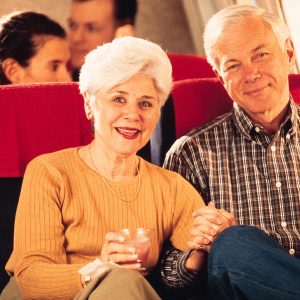The Road Less Traveled: Are You Ready To Head Back Out Into The World?

The Road Less Traveled: Are You Ready To Head Back Out Into The World?
May 20, 2020
Usually, when we’re heading into Memorial Day weekend, we’ve got travel plans in place and are ready to embrace the beginning of summer wanderlust. In fact, according to AAA, last year 43 million Americans traveled over the 3-day-weekend that marks the official beginning of summer. This year? Not so much, as most of us are homebound due to quarantine mandates, virus fears, or limitations on travel options (not to mention tighter budgets). With few flights available, most hotels closed and restaurants shuttered, even local car travel seems challenging. And that’s probably for the best, given that the CDC continues to advise that all non-essential travel be curtailed for the moment.
As a result, the tourism industry, both nationally and globally, has taken a real hit. In particular, states that rely on tourism for the revenue generated are expected to suffer severely, as few are hitting the beaches in Hawaii, the slot machines in Las Vegas, or the amusement parks in Florida. State budgets will likely shrink and workers connected to tourist industries will likely be permanently laid off. Estimates are that the tourism industry will not recover until 2023, though surely people will want to get back out before then. So how will travel change? Experts are predicting everything from local and regional car trips, seeking out more nature destinations with fewer crowds, and shorter flights if they happen at all.
In fact, air travel remains a big question mark as to what it will look like and how comfortable passengers will be going forward. According to a recent report on NPR, air travel is down by 90% since March. Currently, there continue to be real risks of virus exposure when flying. That’s not because of the air circulating around you but rather due to the other passengers you are likely to come into contact with, either in the airport, boarding or discharging from the plane or during the flight. Most airlines are now requiring the wearing of face masks and while many are trying to leave space between passengers, that’s not always possible given the vastly reduced number of flights. A recent Wall Street Journal article posited that flights in the near future will include temperature checks and thermal scans looking for fever before boarding, permission needing to be given to leave a seat for a bathroom visit and the reduction of food and beverage carts on flights, not to mention eliminating priority boarding for business and higher class tickets.
Whether or not it’s safe to travel, the probable hassles you’ll encounter are additional factors to consider. Many countries are not allowing in foreign visitors and if you are permitted to enter, you’ll likely have to quarantine for 2 weeks before you can move freely. And if you do travel and are willing to risk virus exposure? Make sure you read the fine print of your travel insurance because many policies may not cover coronavirus infection and the medical care that may be needed as a result. You may want to take a look at the website SquareMouth to read about the differences in travel insurance policies.
Overall, as The Washington Post and National Geographic both advise, trip planning, rather than actual travel, may be the best way at this point to raise your spirits, give you something to look forward to for the future, and allow you to enjoy the pleasures of other places without the risk and hassles. So, to help you dive into your travel research, you may want to check out some famous iconic foods from around the country (and ways you can have them brought into your own home) or take a virtual trip to London to check out the newly opened Chelsea Flower Show from the comfort of your own living room couch.







